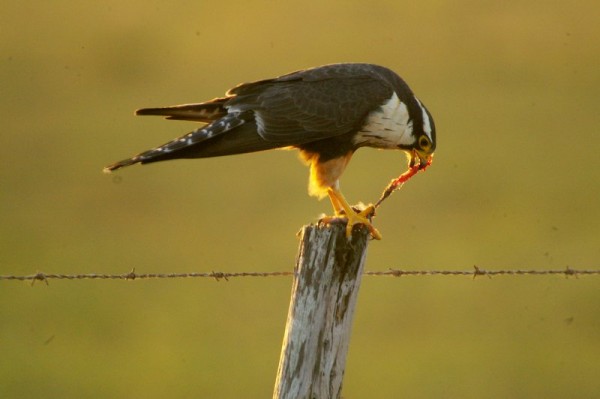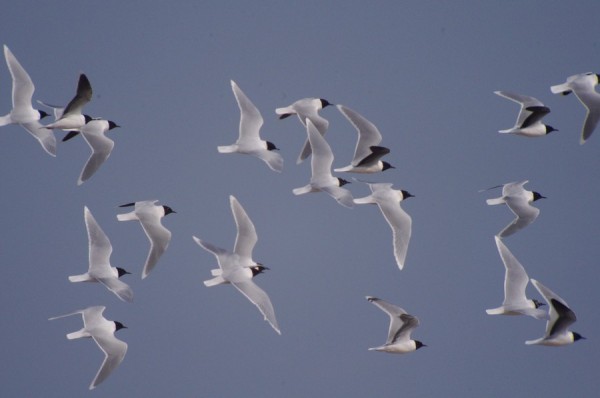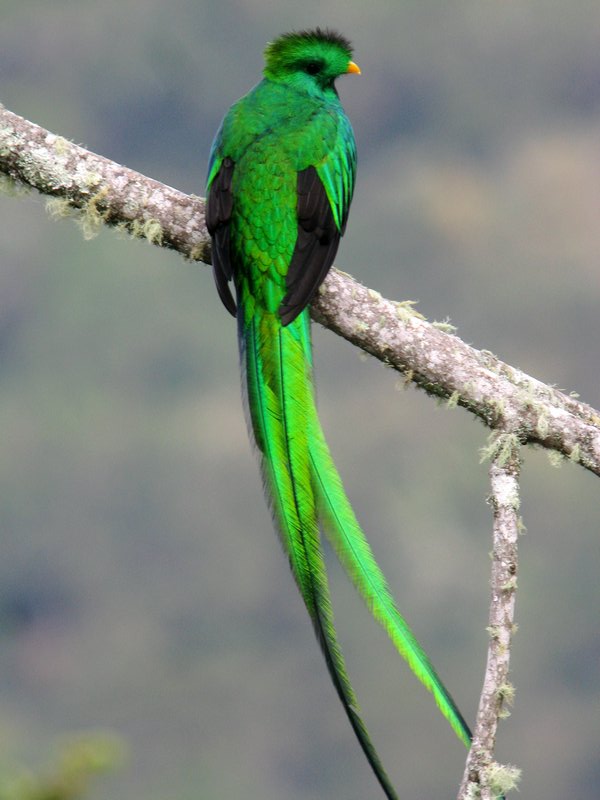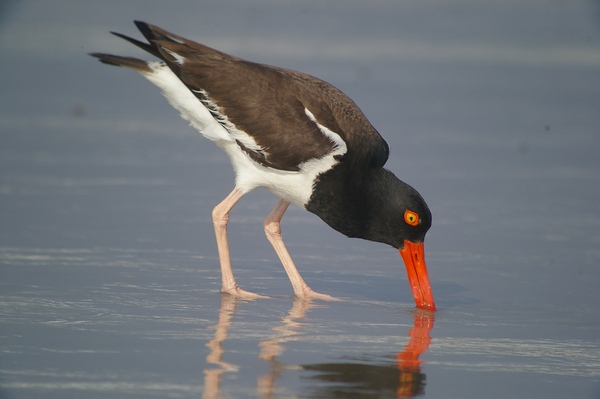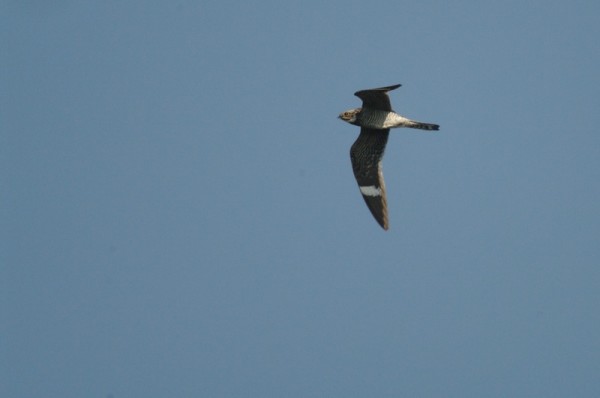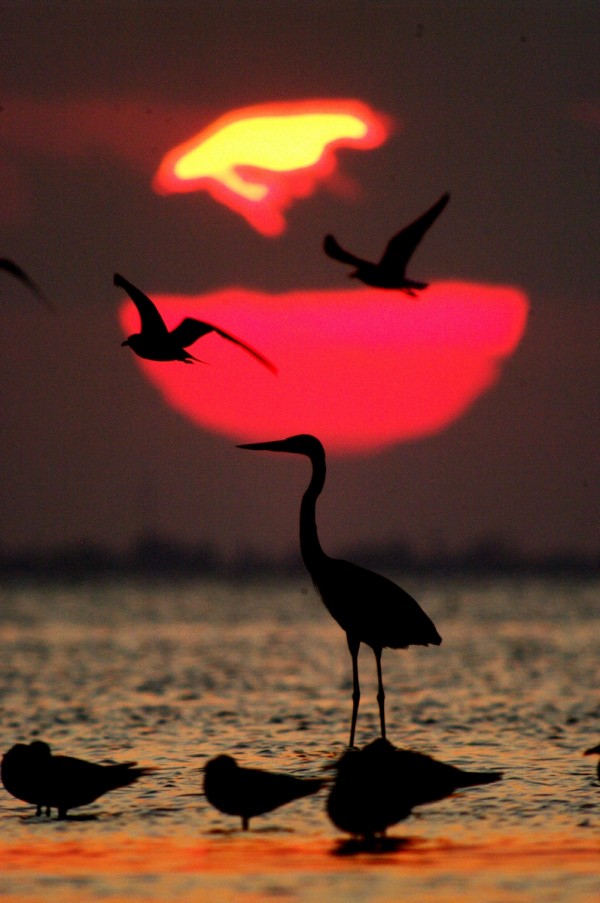Featured Digiscoper: Clay Taylor (USA)
I really like going digiscoping with Clay, there is always something to learn from him, but I love going out with him mostly just because he really loves digiscoping and sharing my passion with someone equally nuts about it is great. Clay Taylor is the Naturalist Market Manager for Swarovski Optik North America.
When did you start digiscoping?
March, 2001 when I bought my first digital camera, a Pentax EI200. It had 2.1 megapixels, a 3x optical zoom, and cost over $600. Woweee…
What is the number one question you are asked related to digiscoping?
1A – What camera should I get for digiscoping? (answer – there is NO “Best Camera”, and thus starts the Q&A session) 1B – How can I get better focusing? (answer – it’s usually image shake, not focus problems)
If you were a bird, what bird would you be?
Ooohh… that’s a tough one – there are so many possibilities. I guess a Swallow-tailed Kite, in part because they make flying look FUN, also because they have a pretty varied diet, so feeding will not get in the way of having fun while flying. If I can include fictional birds, my answer would be Jonathan Livingston Seagull, or one of his disciples, learning how to “fly perfect”.
How many digiscoping photos do you take a year?
Probably well over 100,000. As the file sizes grow, and now that we can do HD videos, I will certainly shoot over a terabyte in 2011.
What is your keeper:trash it ratio?
I only actually Delete those images that are either mistakes, test shots, etc., as those would be images that have no conceivable value. I probably keep well over 80% of what I take, even if they are photographically awful, for birding / ID purposes; showing shape, proportion, coloration, field marks, etc. I have found that even years later, I can find an image that helps confirm an ID for someone’s “Unknown bird” photo.
What you are really asking is the percentage of ones that I will show to other birders / digiscopers, right? Probably 10% to 15%, mostly because I am not worried about my images being perfectly spotless, noise-free, and over-sharpened. In a recent session of digiscoping flying shorebirds, I shot nearly 75 images of which I would show about 18 – 20, so that’s almost 20%.
Why don’t you like photoshop?
I never really enjoyed working in the darkroom with film and prints – for some people, that was the most fun part. My photography roots are from shooting slides, and I enjoy the actual taking of photos; the challenge of getting the correct exposure, composition, and image content at the time of exposure. Digital is wonderful in that you can instantly review your shots and make any necessary corrections on the spot. My dislike of post–processing stems from my basic dislike of time spent physically in the darkroom. Also, messing with the image well after the taking just does not appeal to me. It becomes more like work than play.
Specifically referring to PhotoShop the product, the menus, controls and steps needed to complete the process are NOT intuitive. If you do not do PS, Elements, or LightRoom on a regular basis, remembering the controls from your last session weeks ago becomes very frustrating and time-consuming. My basic operations in post-processing are usually; adjust Brightness / Contrast, adjust mid-tone values, Crop, and Resize (if necessary). I use Easy Thumbnails for resizing images for e-mailing. However, even with a very simple and intuitive post-processing program, I simply do not enjoy that creative process, while for others it is the fun part of the exercise.
Are there different types of digiscopers?
That is the difficult and often frustrating part – there are MANY kinds of digiscopers, and other than the act of digiscoping itself, it is impossible to find common ground amongst them. When birders first “discovered” digiscoping, it was a tool to be able to record distant birds with enough accuracy to be able to identify them, for rare sightings or puzzling plumages. Then the photographers “discovered” the ability to shoot images at equivalent focal lengths of 2000mmm and 3000mm, etc. Now the Quest for Quality took over the discussions on the internet forums, and a lot of active birder / digiscopers were frightened away, or at least stopped posting images and became “lurkers”. Many newbies that come from the photo side want their Auto-Everything methods of photography to work for digiscoping as well, and they are disappointed and dismayed when they find out they have to work hard to become a top digiscoper.
It is always great to see someone try digiscoping for the first time, and their face lights up when they see the images that they just took. That is when it is fun to be a digiscoper.
If you had to choose a single digiscoped photo to be your favourite, which would you choose and why?
The Bald Eagle fight in WA, taken with the Nikon D1. Technically, it needs work, but the birds themselves always make me grin.
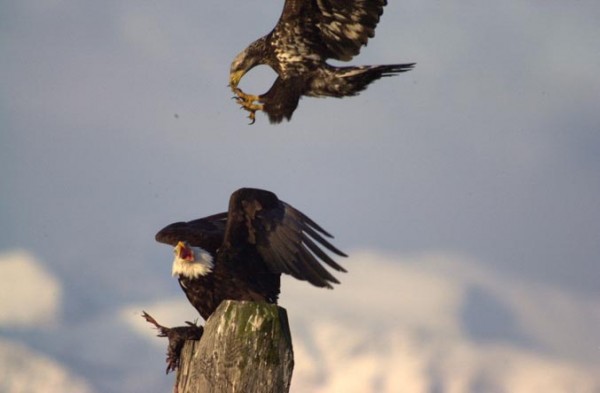 You know you have arrived as a digiscoper when…
You know you have arrived as a digiscoper when…
Jay Turberville agrees with you.
You know you have lost your mind and gone too far with this whole digiscoping thing when…
You want to bring four different cameras, two or three scope eyepieces, and a couple of different adapters with you in the field, just to cover all the possibilities.
Okay, why a DSLR for digiscoping?
Speed, flexibility, ease of use. Squinting at an LCD screen on a Point & Shoot camera can be maddening, as is the speed at which a P&S camera operates. The viewfinder of a D-SLR gives you all the shooting information you need, while at the same time you have total control over focusing and composition. Following a fast-moving bird on any P&S camera’s LCD screen while keeping the image focused and properly composed is nearly impossible. The viewfinder of a D-SLR makes it far easier to photograph flying hawks and running shorebirds. The new Electronic Viewfinders (EVFs) make it even better, as you can preview your exposure and white balance as well as shooting settings and focus accuracy. I find that I use my D-SLR and ILEV cameras on Manual Exposure mode over 50% of the time, as Aperture Preferred seems to always want to expose the scene differently than I want it.
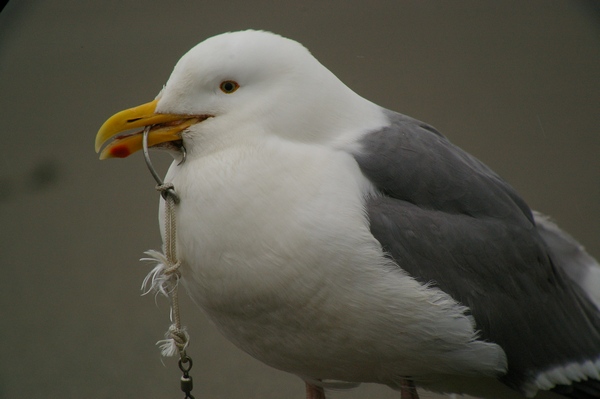 What is your favourite digiscoping subject?
What is your favourite digiscoping subject?
Wow, there are so many choices. As a group, probably Gulls and Terns, because they will frequently be roosting and allow you to approach closely enough to get good images, plus they have plumages that are often photographically challenging, with white bodies, black caps, brightly-colored bills, etc. There are a few species that I am physically unable to pass by without stopping to shoot pictures of them, even if the quality is suspect – Caspian Tern, Whimbrel, Hooded Warbler, Peregrine Falcon, Lincoln’s Sparrow, and Hooded Merganser, to name a few.
You haven’t lived as a digiscoper until…
You arrive at a location intending to do some digiscoping, and there are SO MANY birds present that you have trouble picking which one you want to photograph. As soon as you start digiscoping one, something else even better shows up and distracts you away from your subject, and it keeps happening again and again. I can think of a few places where that has happened – the shorebirds in August at South Beach in Chatham, MA, the hummingbird gardens at Savegre Lodge in Costa Rica, anywhere in Cape May, NJ on a crazy migration day in October, Magee Marsh in OH during a spring morning. You function on pure adrenalin until you either run out of batteries or memory cards (and shame on you if you didn’t bring enough!).

